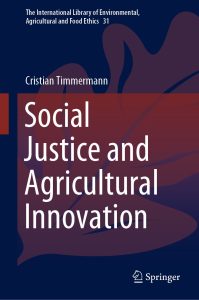You can retake the quiz as many times as you’d like, but your average score from all attempts will be recorded in the gradebook, so each attempt can help improve your overall performance. For example, if you take the quiz three times and score 3/10, 7/10, and 10/10, your final recorded score will be the average of these attempts: (3 + 7 + 10) ÷ 3 = 6.7/10.
Who Do You Believe? Evaluating Source Credibility
Trust Me…
Did you know that you are more likely to believe a lie from someone you trust than the truth from someone you do not trust? It’s true. Studies show that we place enormous weight on where we get our information. But are we believing the most reliable sources?
Source Credibility
Source credibility refers to the trustworthiness and reliability of the information provided by a source. In the context of research, evaluating the credibility of sources is essential to ensure that the information you are using is accurate, unbiased, and well-supported by evidence. Credible sources, such as academic journals and government reports, are typically written by experts in the field and undergo rigorous fact-checking and peer review. Conversely, non-academic sources can vary widely in quality, so it’s important to assess factors like the author’s qualifications, the recency of the information, and the presence of supporting citations. By critically evaluating source credibility, you can build a solid foundation for your research and draw well-informed conclusions.

Alex Jones, pictured above, is a far-right conspiracy theorist and founder of Infowars. He was found guilty of defamation for spreading false claims that the 2012 Sandy Hook school shooting was a hoax. The Connecticut jury ordered him to pay $965 million in damages to the families of eight victims and an FBI agent for the suffering caused by his falsehoods. Jones’s repeated claims led to harassment and threats against the families, exacerbating their trauma and forcing some to move away from their homes. This case is part of a broader legal effort to hold Jones accountable for his harmful conspiracy theories (The Texas Tribune). Alex Jones is a powerful example for evaluating source credibility because his spread of false claims about the Sandy Hook shooting demonstrates the real-world consequences of harmful misinformation on individuals and society.
Why You Should Care
In the world of fake news and misinformation, knowing how to find reliable information from credible sources is like having a superpower. It ensures that your work is built on solid ground and respected by others.
Learning Objectives
In this lesson, you will learn to…
- Understand Types of Sources: Recognize the differences between popular, credible, and academic sources, including their characteristics, pros, and cons, and when to use each type.
- Evaluate Source Credibility: Understand how to assess the reliability and credibility of different sources to ensure the information used is trustworthy and appropriate for academic work.
Understanding Types of Sources
There are tons of sources available to you, but how can you categorize them? And which sources are appropriate for college courses? Think of sources as a continuum like the one below. In this case, a continuum is a range of sources that vary gradually. The continuum ranges from popular (far left) to trade (middle) to scholarly / academic (far right). The further to the right your sources, the more credible they will be for academic writing.

 |
 |
 |
Popular |
Trade |
Scholarly / Academic |
| The primary purpose of popular sources is entertainment. The information is not always current or reliable. Additionally, the authors may lack authority (education and/or experience) on the topics. | The purpose of trade sources is usually clear to the audience and they do not try to conceal their motivation for providing information. The information is often current, reliable, and provided by authors who typically have authority on the topics. | The purpose of scholarly / academic sources is always clear to the audience. The information is always current and reliable. Authors who contribute to scholarly / academic sources have very strong authority on the topics. Additionally, the sources are peer reviewed–meaning the information is fact checked by other experts in the field. |
| Examples: People Magazine, BuzzFeed, USA Today | Examples: NPR, The New York Times, BBC News | Examples: The Academic Journal of Sociology, Journal of Urban Health, Nature |
Check Your Understanding
Practice your understanding of the concept. Drag each source into the correct space on the continuum. If you’re not familiar with the source, click on the link to learn more about it. This activity is not graded.
Red Flag, Green Flag: Evaluating Non-Academic Sources

When evaluating non-academic sources, it’s crucial to consider criteria such as currency, reliability, authority, and purpose. For instance, a source like CNN can provide a well-researched, fact-checked article written by a credible journalist, offering valuable insights. However, another article on the same website might contain obvious bias or lack thorough research. By applying the criteria of Currency, Reliability, Authority, and Purpose, you can discern the credibility of the information provided.
Currency
Does the source provide current information? Currency refers to how up-to-date the information is. Sources with recent publication dates are more likely to provide accurate and relevant data, reflecting the latest research and developments. Red flags for currency include outdated publication dates, with no recent updates or references. Green flags include recent publication dates and evidence of regular updates, ensuring the information is current and relevant.
- Red Flag: An article from 2005 discussing current economic trends without any updates.
- Green Flag: A study published within the last year analyzing the impact of recent policy changes on poverty.
Reliability
Does the source use information from other reliable sources? Reliability assesses whether a source uses and references other credible sources to support its claims. A reliable source cites reputable studies, articles, and data. Red flags include a lack of citations, reliance on personal opinions, or references to non-credible sources. Green flags are well-cited articles with references to peer-reviewed journals, official reports, and recognized experts in the field.
- Red Flag: An article making bold claims about poverty without citing any sources.
- Green Flag: A report that references data from the World Bank, academic journals, and government statistics.
Authority
Does the source have sufficient education and/or experience? Authority involves the qualifications and expertise of the author or publisher. Authors with relevant academic degrees, professional experience, and affiliations with reputable institutions have more authority. Red flags include authors with no credentials or expertise in the topic they are discussing. Green flags include detailed author bios highlighting their qualifications, professional experience, and institutional affiliations.
Even when a source lacks a byline, do not assume authorship is unknowable—or that the source is automatically credible. Begin by searching for the writer through the site’s masthead or “About” page, DOI metadata, institutional directories, Google Scholar, professional websites, or platforms like LinkedIn. If authorship remains unclear after reasonable effort, treat that as a red flag. Likewise, if you can identify the author but their training, affiliations, or publication record do not plausibly align with the topic (e.g., a marketing blogger offering medical guidance), consider the source a red flag.
When the “author” is an organization (and no authors are listed), evaluate the organization’s mission, reputation, and review processes before citing.
- Red Flag: A blog post about economic policies written by someone with no background in economics.
- Green Flag: An article on poverty written by a university professor with a Ph.D. in Economics.
Purpose
Does the source have good motivations for providing the information? The purpose criterion evaluates the intent behind the information. Credible sources aim to inform and educate without bias. Red flags include sources with evident bias, promoting an agenda, or trying to sell a product. Green flags are sources that provide balanced, objective information, with a clear aim to educate and inform without hidden motives.
- Red Flag: A website criticizing government welfare programs while selling alternative financial products.
- Green Flag: A non-profit organization’s report on poverty, aiming to raise awareness and inform policy decisions.
Check Your Understanding
Practice your understanding of the concept. Evaluate the credibility of a simulated website using four key criteria: Currency, Reliability, Authority, and Purpose. This activity is not graded.
Non-Academic Source Guide
Evaluating sources can be time-consuming. The good news is that the more you practice, the faster you will become. You can streamline the process by exploring non-academic source guides. The Reality Team, a 501 (c)(3) organization, has assembled one such guide called Credible Sources, which outlines sources you can generally trust when conducting research, as well as sources to avoid due to intentional misinformation. Don’t forget, it’s still important to evaluate the individual authors, even if they are writing for sources that are widely regarded as credible.
Choosing the Best Sources for Your Research
When conducting research, it’s important to recognize that not all sources are created equal. With countless options available, ranging from popular blogs to academic journals, the quality and credibility of the information can vary significantly. To ensure your research is built on a solid foundation, look for sources with superior credentials. These sources are typically authored by experts with relevant education and experience, are published by reputable institutions, and provide well-supported, current, and unbiased information. Prioritizing such sources will enhance the reliability and depth of your research, leading to more accurate and trustworthy conclusions.
Check Your Understanding
Practice your understanding of the concept. This activity is not graded.
Conclusion
Evaluating source credibility is crucial for conducting reliable and trustworthy research. With the prevalence of misinformation, being able to discern the quality of sources ensures your work is based on accurate, unbiased, and well-supported information. This chapter has equipped you with the tools to evaluate sources based on currency, reliability, authority, and purpose, helping you make informed decisions about which sources to trust. By applying these criteria, you can enhance the credibility of your research and contribute meaningfully to academic and real-world discussions.
Key Takeaways
- Currency: Ensure the information is current and up-to-date.
- Reliability: Verify that the source uses and references other reliable sources.
- Authority: Check the qualifications and expertise of the author or publisher.
- Purpose: Evaluate the intent behind the information to ensure it is unbiased and informative.
Chapter Quiz
The following quiz is graded.
definition
name(s) of the author(s). You usually find these at the top or bottom of an article.
